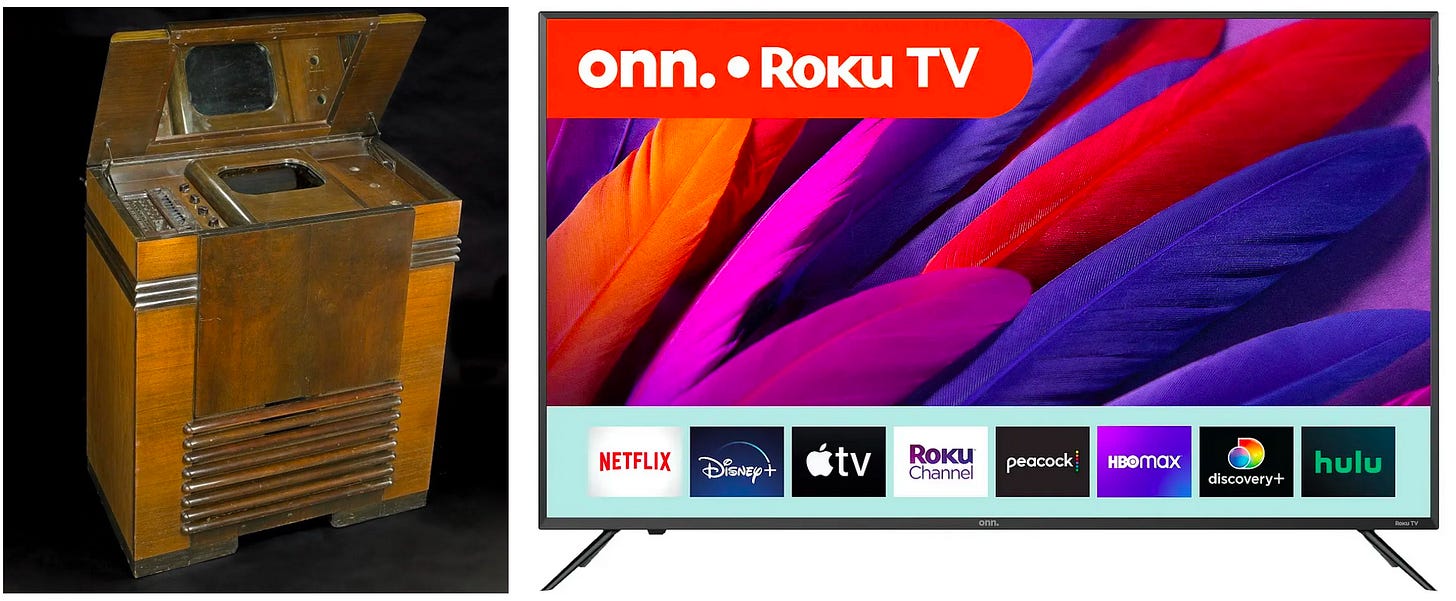After 96 Years, TV Abundance Continues to Flourish
What Philo T. Farnsworth invented in 1927 has become one of our most beloved products with billions sold.
The first successful transmission of an all electronic television signal occurred on September 7, 1927 in the laboratory of Philo T. Farnsworth in San Francisco, California. The idea came to him at 14 when he was plowing fields with horses. As Phil Savenick notes:
Born in a log cabin in Utah in 1906, Philo Taylor Farnsworth grew up in the Old West. His father drove a stagecoach and their farm had no electricity. He had no telephone, no computer, not even lights at night. After seeing a locomotive at the age of six, he decided he wanted to become an inventor. A summer job near Rigby, Idaho provided the fertile soil for his “big idea.” The barn contained a stash of science fiction magazines that promised a future with flying cars, picture phones, and mechanical television. By learning to repair the farm’s broken Delco generator, he began his lifelong fascination with electrons.
At 21, Farnsworth secured a $25,000 loan from Crocker Bank to pursue his vision and the rest is history. America had the capitals for this innovation; the idea, the freedom, the financial resources, the technical talent, and the market.
Brian Roemmele notes that from 1939-1941, around 7,000 television sets were sold. Television broadcasts were limited to a few large cities such as New York and Los Angeles. This new technology was out of reach for most Americans as sets ranged from $200 to $600. In 1940 an unskilled worker was earning around 33 cents an hour. This would put the time price of a TV at 606 to 1,818 hours with an average of 1,212 hours.
Today you can buy a 50 inch 4K ultra high definition TV for $199.95 at Walmart. Unskilled workers are earning around $15.72 an hour, putting the time price at 12.7 hours.
From 1940 to 2022, population in the U.S. increased 152 percent from 132 million to over 333 million. It would have taken 160 billion hours of unskilled labor to buy everyone in the U.S. a TV in 1940. Today it would take only 4.2 billion hours. While population has increased by 152 percent, the time price for the population has fallen by 97 percent.
It is estimated that 96 percent of American homes have at least one TV. Statista estimates that 1.74 billion of the 2.15 billion (81%) households worldwide have at least one TV. In addition, there are an estimated 200 million units sold each year. Without the innovation of TV, there would be no internet or mobile phones. It is a foundation technology for the age of knowledge discovery.
Thanks Mr. Farnsworth for your imagination and dedication to making your vision a reality.
Subscribe for free to receive new posts and support my work.
You can learn more about these economic facts and ideas in our new book, Superabundance, available at Amazon. Jordan Peterson calls it a “profoundly optimistic book.”
Gale Pooley is a Senior Fellow at the Discovery Institute and a board member at Human Progress.







Statista reports unskilled labor at 16 percent in the U.S. and 44 percent globally.
Kyle, thanks for reading. We use both unskilled and blue-collar in our book. Unskilled is a baseline. It is the rate of change that really matters. Let me get the other information for you.